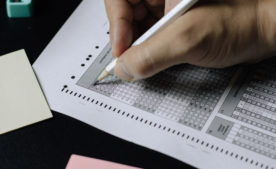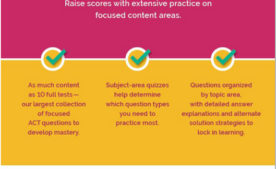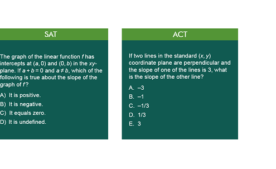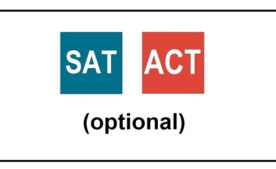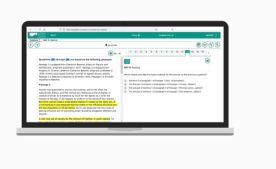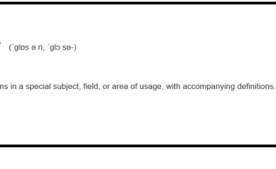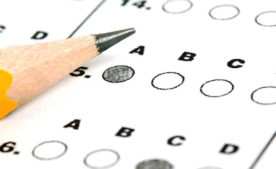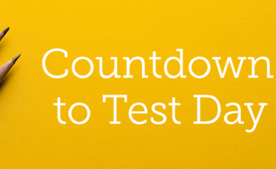Late winter-early spring is peak season for high school juniors to take the SAT or ACT. For many, it is also their first time sitting for the official exam and, once score results are released, they may feel as if they didn’t get the score they were hoping for.
A message for these students: Please don’t be discouraged. Very few students achieve their target score the first time. In fact, very few only take the test than once. In addition, many colleges superscore the SAT and ACT. This means that colleges will combine a student’s highest subsection scores from different administrations of the test to build student’s highest possible SAT or ACT scores (more on this later).
If you are one of the few students who got the score you were aiming for, high five and congratulations! If you weren’t, here are some considerations for what to do next.
How many times should I take the test?
As we stated, most students don’t reach their full score potential after their first attempt. This is why we typically recommend taking the SAT or ACT at least twice. We have found that some students even need to take the test a third time to hit their peak (generally in the early fall of senior year), so testing two to three times is usually the recommendation for most students. In addition, both the SAT and ACT are curriculum-based tests and a student’s performance correlates with age, maturity, and time spent in school. Thus, later in junior year and even into fall of senior year is when students score best.
For students who have taken the test twice and are wondering if they should try for a third and final time, here are some general things to think about.
- How did your performance on the second test compare to recent practice test results? If your official test score was lower than your practice test scores, there might be potential for a score increase by taking the test a third time.
- What does your college list look like? If you are thinking about submitting scores as part of your application, are they consistent with or above the published average scores for those colleges? Check out our post which tracks admission stats for more than 150 selective colleges and universities.
If you would like help with your decision or how to best prepare for retesting, feel free to reach out to one of our program directors.
Why re-take the SAT/ACT in a test-optional world?
One thing students might be thinking: “Most colleges and universities are still test-optional, right? So I do I really need to test again?”
In the current admissions environment, college applicants have everything to win and nothing to lose by aiming for their best test score. Dismissing standardized tests out of hand now could present students with a missed opportunity to showcase their academic abilities and to earn merit scholarships. In our experience, most students end up with strong scores that represent them well.
Another thing to keep in mind that test-optional does not mean test-blind. Many applicants in the most recent college admission cycle submitted their test scores regardless of test-optional. This was especially true for those applying to the more selective schools.
Having the confidence and peace of mind from having a test score in your pocket is powerful. If some schools on your list require scores, you’ll be ready to submit those scores. If others are test-optional, you’ll then have the choice to submit if you feel those scores will represent you well.
Take advantage of Score Choice and SAT/ACT Superscoring
Remember those “average test scores” you see on college and university websites? Those averages are often calculated using superscored test results.
Colleges that superscore will consider your best section scores from multiple tests. For example, if you submit three sets of SAT scores, a college that superscores will record your highest Math score and highest Reading & Writing score from the three tests. Superscoring benefits both the institution and the students. Colleges can publish higher average SAT and ACT scores, positively impacting their selectivity rankings. Students, meanwhile, can be assured that their standardized testing history will be viewed in a more supportive manner.
And almost all schools honor score choice. Score Choice is a score reporting policy, set by the testing agencies (College Board and ACT), that gives students control over their SAT and ACT scores. It allows students to decide exactly which scores they want colleges to see. Having more than one test score gives you more flexibility.
So, even though you may not have reached your score goal on a single administration of the test, the practices of superscoring and score choice are designed to put you in the best light.
Should you switch to the other test?
We have always counseled students to take a sane and sensible approach to testing. At the start of their test prep program, students are encouraged to take both a practice SAT and ACT, then compare their scores and testing experience to choose between an SAT or ACT path.
Keeping with this theme of sane and sensible, if students can pick a path and stay with it that is the ideal. However, there are some cases where they wonder if perhaps the other test would yield better improvements. If you feel as if your test score isn’t an accurate representation of what you’re capable of, or if you’ve taken the test twice and you feel like your scores are plateauing, you might want to consider switching tests. The best way to know for sure is to take a practice test of the other flavor. Compare the practice test score to your official test score using the SAT-ACT concordance table. If the score is comparable or slightly better you may want to consider switching.
While we would like students to avoid hopping back and forth between tests, if they do decide to switch any preparation already done will help them study for the other test. Both the SAT and ACT are based on the curriculum taught in school and there’s a lot of content overlap.
How to prepare for your retake
The decision about when to re-test is up to you. Once you’ve made the commitment, you will want to set a target test date for your next test. Some students may have created a testing schedule at the outset and want to stick with their original plan. Others may have tested for the first time in spring of junior year and have the option of retesting later in the spring/early summer or early fall senior year.
As a general rule, if you’ve already done prep for your first test, plan to prepare 4 to 6 weeks before your next official test date to give you time to ramp back up. In all cases, begin with a practice test, then take a deeper dive into your score results. If you paid to receive the test questions from your official test, also take a look at the questions you missed there. Devote some time to those types of questions and content areas. Keep in mind that these are general guidelines. Every student is different and has their own needs and unique testing plan.
Again, please feel free to contact us if you have questions or would like some advice on how best to proceed.



